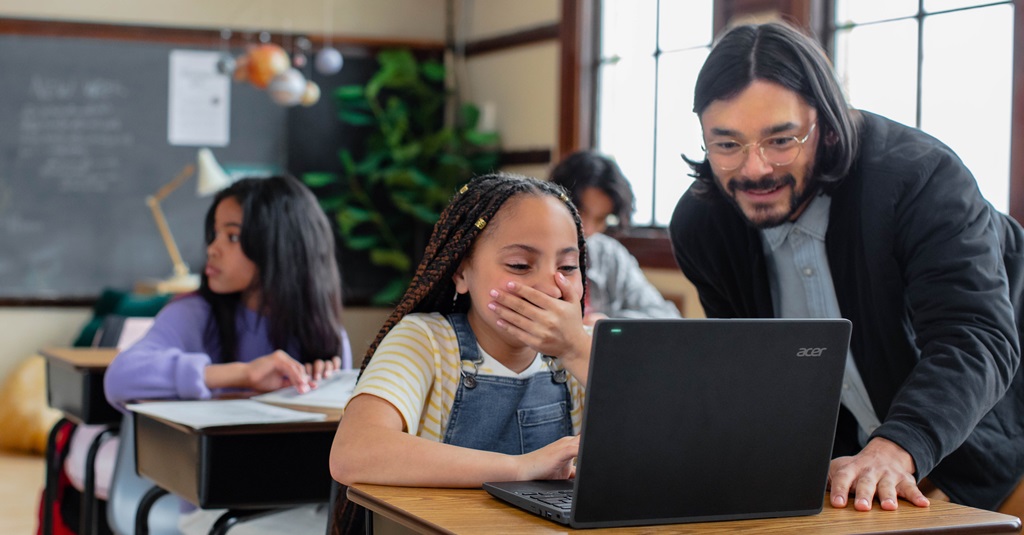24 September 2024
Controles Empresariales sees a world of possibilities for education with AI

Partner Audience: #AllPartners
Relevant to: #SuccessStory #GrowYourBiz #CrossSolution
Artificial intelligence (AI) is no longer a futuristic concept but a reality that’s revolutionizing multiple sectors, and education is no exception. As AI technologies advance, new opportunities are arising to improve and transform education, from personalized teaching to streamlining administrative processes. But how can AI, in combination with digital tools, radically change the education sector and better prepare students for the future? Controles Empresariales partnered with Microsoft to explore the possibilities.
Personalized learning is at the heart of this educational revolution
One of the biggest benefits of AI in education is the ability to deliver personalized learning on a large scale. With the use of advanced algorithms, it’s possible to tailor educational content to the specific needs of individual students. This means that students can learn at their own pace, focusing on areas where they need more support and advancing faster in the subjects they’ve mastered.
In addition, AI can be used to analyze large volumes of data to identify patterns in student learning. These trends allow educators to adjust their teaching methods and offer additional resources to those who need them. This not only improves the quality of education, but also reduces dropout rates by keeping students engaged and motivated.
Leveraging AI to optimize administrative processes
The implementation of AI is not limited to the classroom. Educational institutions can leverage it to optimize their administrative processes, such as enrollment management, student progress tracking, and resource allocation. For example, AI systems can predict the demand for certain courses or educational resources, allowing institutions to plan better.
Likewise, AI can be a powerful tool for automated assessment of tests and assignments, reducing the workload of teachers and allowing them to focus on teaching. With the help of AI, educational institutions can achieve greater operational efficiency, resulting in a better experience for students and teachers.
AI in action in educational environments
In Colombia, we have added several experiences that reflect the power of technology in educational spaces. For example, we collaborated with the Secretary of Education of Medellín to strengthen education during the pandemic crisis in 2020 that resulted in 102,000 students dropping out of school.
Together with Microsoft, we implemented Microsoft 365 in 118 educational institutions, benefiting 1,960 users, including teachers and students, through 167 workshops and more than 330 hours of training. This project not only improved connectivity and reduced dropout rates, it also boosted educational productivity and personalization. Through the integration of tools such as Code Combat and Educaplay, Controles Empresariales demonstrated leadership in the digital transformation of education.
In this scenario, we used AI to transform educational processes by personalizing learning, adapting curricula according to the needs of each student, especially in rural areas with limited resources. In addition, AI was used to predict student dropout rate by analyzing behavioral patterns, enabling early interventions to keep students in the education system. Virtual assistants were also implemented to guide students and teachers in the use of digital tools, offering real-time support and improving accessibility.
AI was also used to automate repetitive administrative tasks, such as attendance management and test marking, allowing teachers to focus more on teaching. Interactive, AI-powered tools were able to deliver more dynamic educational content, while education leaders used predictive analytics to make more informed policy and resource decisions. The result: AI can be leveraged to optimize existing resources and improve the efficiency, accessibility, and personalization of education, generating a lasting positive impact.
The future of education with AI
The implementation of AI in education is not just about improving teaching methods and administrative processes. It also has the potential to transform the way we think about learning and education. As technology continues to advance, it’s critical that educational institutions and governments prepare to integrate these tools effectively, ensuring that all students, regardless of location or socio-economic status, have access to quality education.
AI has the power to bridge gaps, personalize education, and optimize processes. The integration of AI into the education sector is undoubtedly one of the keys to preparing future generations for the challenges of the modern world. Together with Microsoft and the right strategy, Controles Empresariales has shown it’s possible to build a more equitable future full of opportunity for all with AI.
Join the conversation
Want to explore this and other topics you care about with Microsoft and other US partners? Head over to the Microsoft Americas Partner Community on LinkedIn.
